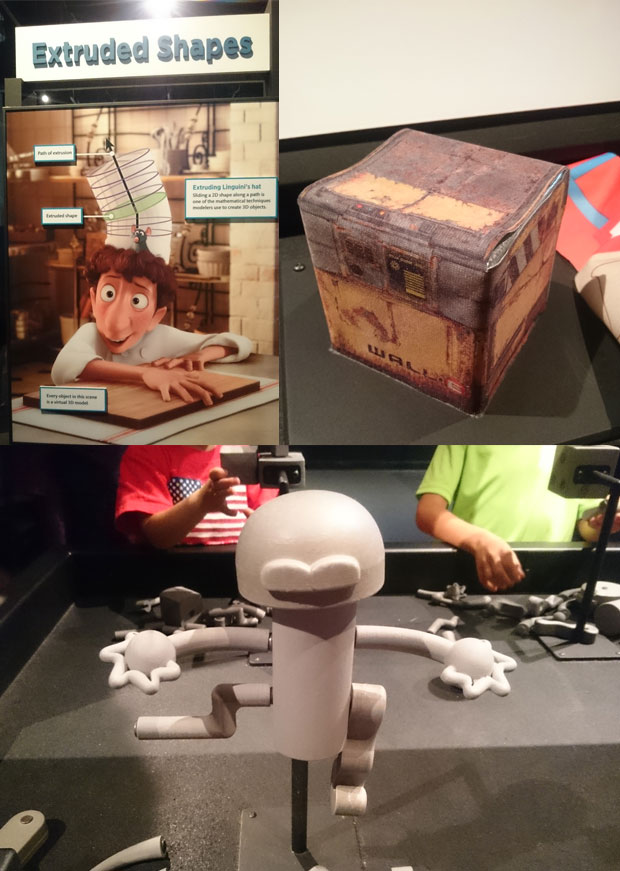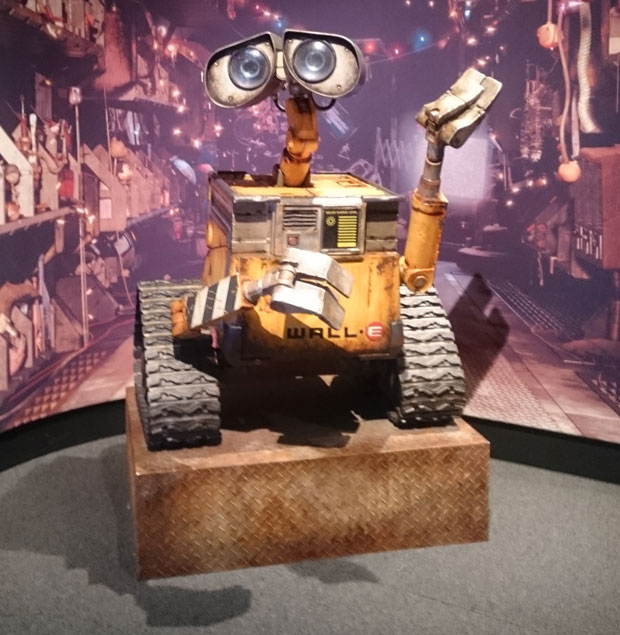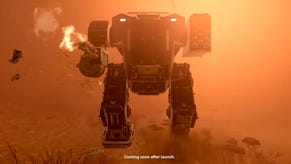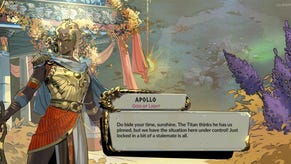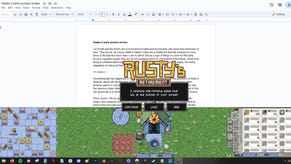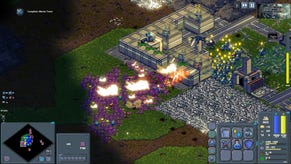The Science Behind Pixar
Mike Wazowski!
Hello. This is the point where I've come back from a press trip and tell you what I managed to do during my wait for the plane home! This time: The Science Behind Pixar exhibition at the California Science Center!
Mostly I wanted to flag it up because if you're in the area you should go see it if at all possible - it's charming but also expresses complicated technical ideas in way that kids and grownups without the specific background experience can get to grips with. It's also really cool to go to if you have an interest in STEM communication for the same reason - it makes complicated/abstract concepts into these tangible and manageable experiences.
To explain what I mean a bit better, the exhibition breaks the process of creating a Pixar movie into sections which you learn about in an intro movie, and then you're free to move around those sections in the show itself. There are bits about rigging where you can mess with jointed arms to try to recreate a pose, bits about extrusion where you pull a lever and it shows a 3D shape being created by pulling that 2D shape along a line, there's a part about 3D co-ordinates where you can move a ping pong ball in 3D space and press a button to mark its current co-ordinates, tracing a shape on a screen.
You've got little cameras you can move around a nature scene, a statue of Wall-E that teaches you about depth of field, a model of Dory you can pose with as you experiment with coloured light, a little desk lamp you can use to make your own stop-motion animation, a time-lapse interactive video that show you what rendering means, there are screens full of sliders that teach you about how to make grass generate differently or how different types of light make for different moods.
It's such a delightful and fascinating exhibition, and one of my favourite things was seeing all of the little kids start to get to grips with these ideas really easily. One section teaches you about shaders and textures and all of that surface creation stuff, and part of it was about having a plain circle and using different options to make it look like a puffy, textured football and then a clear crystal ball. Another bit gave you a wedge-shaped block of metal and you had different cloth coverings you could dress the wedge up in, making it a slice of cheese, then a piece of cake and maybe a wodge of watermelon.
It was just so tactile and approachable! I really hope it tours or, failing that, that they translate some of it into a book. That was the big thing I felt was missing. At the end of UK exhibitions you pretty much always get the option of buying the exhibition catalogue which has illustrations of the show and essays about it or explanations, so that you can kind of take something of the experience away with you as this reference book. I like being able to have that as a reminder of an ephemeral show and it was a sad moment when I realised there wasn't one for The Science Behind Pixar.
Anyway! Go see it if you can. It's charming and accessible.
This article was originally written for the RPS Supporter Program.

